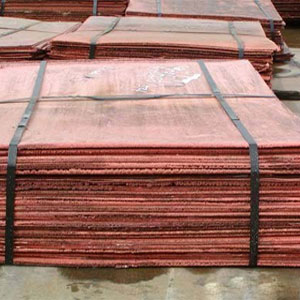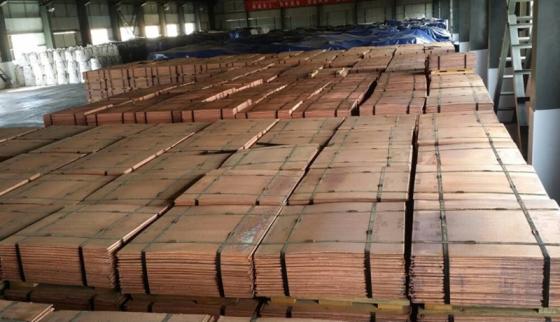
During handling of bundled cathodes, care should be taken that rough handling does not cause breakage of metal bands. Care should be exercised during handling to avoid straps breaking which cause the bundles to become unstable with potential separation and loss of some sheets.Įlectrolytic copper cathodes are usually bought upon a weight basis, and are normally shipped unpacked, often bound together with metal bands. Ingot - Bricks of pure copper may be used by mills for alloying with other metals or used by foundries for casting.īundles of cathode sheets of between 1 and 4 tonnes and held together by steel strapping are shipped unpackaged. Rod stock may be used for forging.Ĭake - Slabs of pure copper, generally about 8" thick and up to 28' long, may be hot- and cold-rolled to produce plate, sheet, strip and foil. Wire Rod - Coiled rod about 1/2" in diameter is drawn down by wire mills to make pure copper wire of all gages.īillet - 30' logs, about 8" diameter, of pure copper are sawed into these shorter lengths which are extruded and then drawn as tube, rod and bar stock of many varied sizes and shapes. Cathodes may also be cast into wire rod, billets, cakes or ingots, generally, as pure copper or alloyed with other metals. Gold, silver and platinum may be recovered from the used bath.Ĭathodes of 99.9% purity may be shipped as melting stock to mills or foundries. Pure copper ions migrate electrolytically from the anodes to "starter sheets" made from pure copper foil where they deposit and build up into a 300-pound cathode. Recycled copper begins its journey to finding another use by being resmelted.Īnodes cast from the nearly pure copper are immersed in an acid bath. Several stages of melting and purifying the copper content result, successively, in matte, blister and, finally, 99% pure copper. Precious metals can be extracted from the solution. When electrically charged, pure copper ions migrate directly from the solution to starter cathodes made from pure copper foil. The copper-laden solution is treated and transferred to an electrolytic process tank. Oxide ore and tailings are leached by a weak acid solution, producing a weak copper sulfate solution. Once copper has been concentrated it can be turned into pure copper cathode in two different ways: Leaching & electrowinning or smelting and electrolytic refining. Tailings (left-over earth) containing copper oxide are routed to leaching tanks or are returned to the surrounding terrain.

Minerals are concentrated into a slurry that is about 15% copper. Sulfide ores are moved to a concentrating stage, while oxide ores are routed to leaching tanks.

The beginning for all copper is to mine sulfide and oxide ores through digging or blasting and then crushing it to walnut-sized pieces.Ĭrushed ore is ball or rod-milled in large, rotating, cylindrical machines until it becomes a powder usually containing less than 1 percent copper. Below is a quick description of the path. When it is recycled it can pass through some over and over again. It is therefore essential that, during shipping and transportation, they are not contaminated with any extraneous materials.Ĭopper Production from Ore to Finished Productįrom its original home buried underground in a mine to its use in a finished product such as wire or pipe, copper passes through a number of stages.

Copper is also used in the production of brass, copper tube, copper sheet products, and found in over 450 alloys.Ĭopper cathodes are used as a raw material feed for the production of high purity copper and copper alloy products. Copper cathode is the primary raw material input for the production of copper rod for the wire and cable industry.

Individual cathode sheets are manufactured to different dimensions by different suppliers in the range of 0,5 m 2 to 1 m 2 and 3 to 20 mm thick, with or without ‘ears’.


 0 kommentar(er)
0 kommentar(er)
